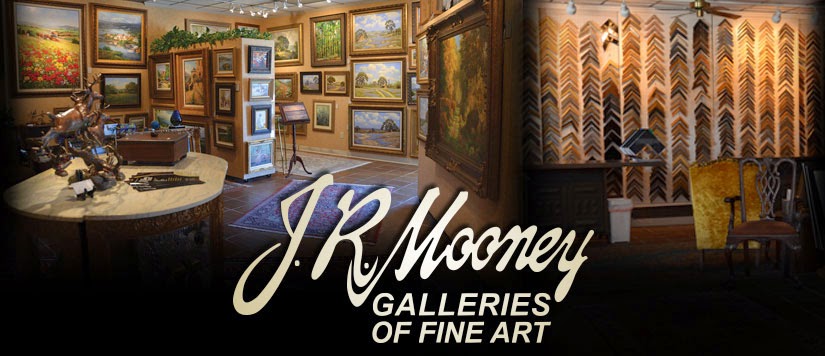 |
| Birds of Paradise by Jose Vives-Atsara |
Birds of Paradise is
a Jose Vives-Atsara painting that jumps off the canvas. The spiky bright yellow
flowers grab the viewer’s attention and contrast with the abstract background.
The effect is a dramatic piece, one that is not the typical floral subject
matter for the artist. The painting does have all the distinctions of a
Vives-Atsara, heavy use of pallette knife, bold colors and subject matter. However
he usually rendered more traditional flowers like roses and wildflowers. This
indicates that Birds of Paradise was
most likely a commission.
Vives-Atsara's oil paintings have been
described as both realistic and impressionistic; this piece borderlines on the
abstract. The flowers and foliage fall into the impressionism category but the
yellow petals have a geometric quality to them that when juxtaposed against the
fluid and indistinct background create an abstract effect. The result is a
highly impressionistic rendition that appears more abstract as it is viewed. Throughout
his career he used only nine colors, and he mixed his paints so well that he
didn’t muddle colors. In Birds of
Paradise, even though impressionistic, the greens do not become brown and
the yellows remains pristine. Vives-Atsara also shows his mastery with surprise
pops of blue and purple that individually stand out, but taken as a whole blend
effortlessly with the entire piece.
Vives-Atsara studied art at Colegio de San Ramon
and the School of Fine Arts in Barcelona. The Spanish Civil War interrupted
his studies and he was impressed into the Communist Army. He was a POW and
eventually migrated to United States. He landed in
San Antonio in 1956 where he established his art career and eventually became a
citizen. Vives-Atsara was an art professor at Incarnate Word College. For special guests such as Pope John Paul
II, he commissioned paintings as gifts. He enjoyed a celebrated career as an
artist and passed away in 2004. He is currently represented in collections including the Museum
of Modern Art, Spain, and the Modern Art Museum of Fort Worth. J.R. Mooney
Galleries of Fine Art is pleased to have several Jose Vives-Atsara paintings
including Birds of Paradise for
viewing or purchase. Stop by the
gallery today.
By Gina Martinez Gladson, JR Mooney Galleries staff

